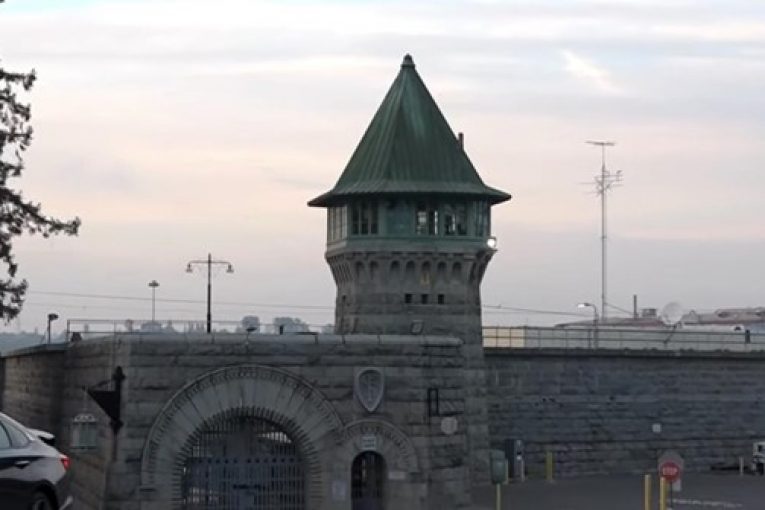

By Earl S. Breckenridge
“Once established, culture has a life of its own, so to speak; that is, it is a continuum of things and events in a cause and effect relationship; it flows down through time from one generation to another.”
— “The Concepts and Components of Culture,” Encyclopaedia Britannica
THE BUS RIDE from Los Angeles County Jail to Folsom State Prison was surreal. I was among 20 prisoners in bright-red jumpsuits who rode in silent introspection. Previous juvenile arrests sent me to boys’ homes, camps, and Youth Authority for crimes of petty theft and grand theft auto. Yet, this time in 1983, I was 19 and sentenced to life without the possibility of parole for two counts of burglary and first-degree murder-robbery.
Hopelessness is more than an inability to see light at the end of a tunnel; it is an inescapable conviction that darkness is all there is. Nazi concentration camp survivor and psychiatrist Viktor E. Frankl observed in his book Man’s Search for Meaning that an existential loss of meaning accompanied gradual mental, behavioral, and social decay among many of his fellow prisoners. An uncertain future and hostile daily existence reconditions values and world-views within the confines of barbed wire and iron bars, electrified fences and persistent armed guards. The higher attributes of human personality are constrained by the imminent need — Blend in and adapt; survive or die.
We exited the bus and marched across the main exercise yard toward the farthest of an enclosed assortment of massive gray edifices. The flora and fauna of the inner prison sanctum was aesthetically destitute. Old and decaying living quarters, mess hall, fenced-in dirt field, and gun towers with signs that read: NO WARNING SHOTS — these provided aerial backdrop for the dingy blue silhouettes congregated in otherwise racially segregated groups. Their hardened, chiseled features and hunched-over reluctance intent on tension-diffusing recreational activities, they stalked our every movement as we approached the mouth of reception: 1 Building. We entered.
The building was massive inside. A steady hum of indistinct chatter and intrusive stench of stale humid air thickened by sweat and despair of overcrowded flesh — stacked in tiny double-bunked cells five tiers high — jolted the senses. Some prisoners roamed freely, with brooms and mops, cigarettes dangling festively from clenched jaws. Others formed distorted images peering through cell bars, mirrors protruding gingerly against the hard iron. I was suddenly overwhelmed with the seasick sensation of entering an old grungy slave ship, the weary souls of my ancestors escaping from the  depths of a long-forgotten genetic migration to rest here, in the hallowed shadows of suffering and decay.
depths of a long-forgotten genetic migration to rest here, in the hallowed shadows of suffering and decay.
An old con approached and thrust a roll of bedding and toiletries into my arms and motioned toward a cell on the fourth tier — my cell. I proceeded to it and entered, quickly scanned my future residence for life, and let the anguish of Job wash over and comfort me: “For what I fear comes upon me, and what I dread befalls me. I am not at ease, nor am I quiet; and I am not at rest, but turmoil comes” (Job 3:25-26).
Anthropologist Franz Boas coined the term cultural relativism to denote cultural traits and survival essentials peculiar to a given people and society. Customs, laws, mores, etc., which may be necessary for personal advancement and social stability in one culture may prove the source of estrangement and even death in another. As such, cultures evolve and adapt over time as a given people interacts within its society, cultivating human potential, and develops mutual benefits between itself and the environment.
Regimented minutia for evading predation — Blend in and adapt; survive or die — confronts each new arrival into prison. Cellblock mores, chow hall customs, proper affiliations, and penitentiary politics mesmerize and overwhelm. Racists, druggies, gangs, racketeering, and alcoholism recruit the naïve, disenfranchised, and zealous. Eroding moral infrastructure favors the calloused, violent, and indifferent, while the silent screams of misery — mental deterioration, disease, suicide, addiction, madness — intensify the sacred ensemble: Blend in and adapt; survive or die. Undifferentiated and constrained, the secured perimeter becomes mental deadlocks as we lose ourselves in assimilating the identity of survival. The base and virtuous exist at polar extremes; the middle majority slips into enculturation with skill and ease developed over a lifetime of brokenness and living in the shadows.
Shame, guilt, rejection, insecurity, and unnurtured potential are scars that bruise the soul, which obscures the past, the present, and future, imprisoning who we are, why we are here, and where we are headed. Long before the gavel drops on a guilty verdict and life sentence, the convict’s continuum is to abandon innocence and conspire with self-centeredness, pride, and rebellion as a chosen way of life. “There is a way which seems right to a man, but its end is the way of death” (Proverbs 14:12).
Now, nearly 40 years later, entombed in the just recompense of my corruption, I am daily challenged to surrender to conformity: Blend in and adapt; survive or die — or bring light to the insidious criminal continuum. Opening a window shines light on the dark and offers glimpses of the way out. Reporting for the Mule Creek Post is an act of defiance; every word and line an expression of resistance against the subtle prison conditioning, which not only liberates from chains of the past, it alters the trajectory of my future.
Originally Published in the Mule Creek Post
